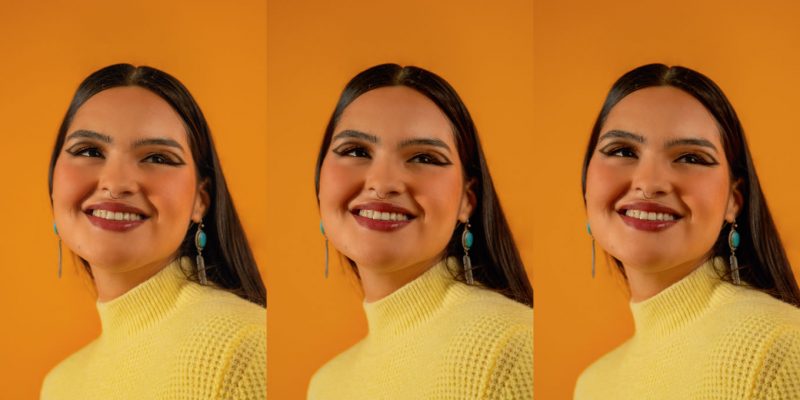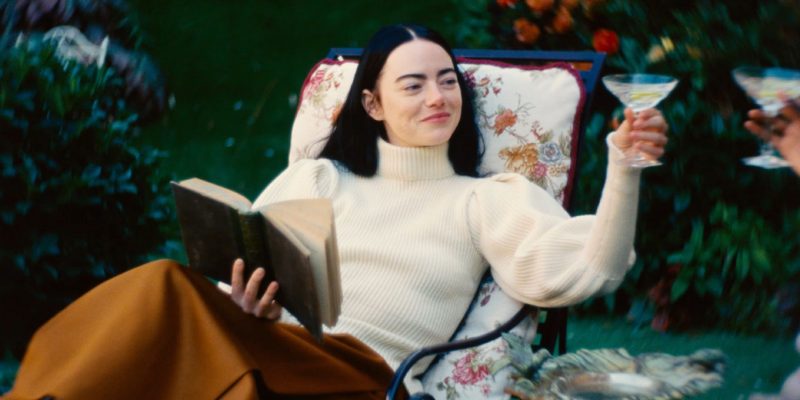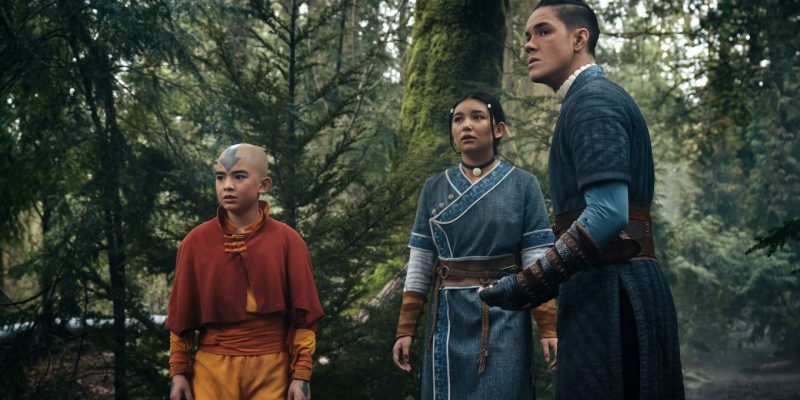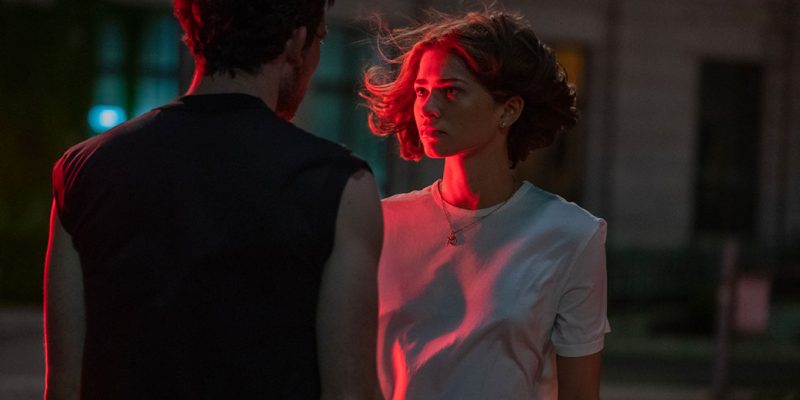Movies & TV
Rodarte's Laura Mulleavy discusses her first film
Laura and Kate Mulleavy of cult fashion label Rodarte are the latest fashion designers to direct a film.
by : Liz Guber- Sep 27th, 2017
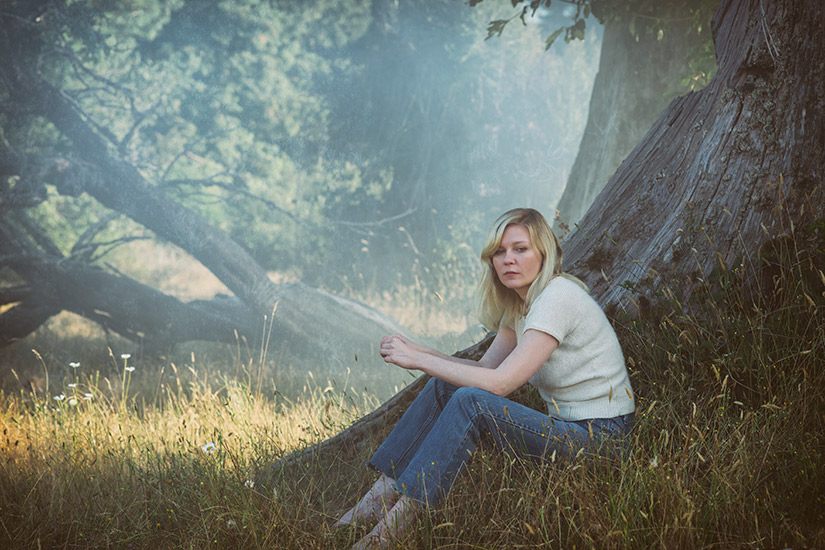
When I reach Laura Mulleavy, one half of the sibling duo behind the fashion label Rodarte, it’s on a rare press-light day leading up to the release of the sisters’ first film, Woodshock. The Mulleavys wrote the script back in 2011, and now the story of Theresa, a woman who gradually disconnects from the world after assisting her terminally ill mother’s suicide, has come to life on screen. The film is compelling, contemplative and visually hypnotic. It’s set in and around the redwood forests of Northern California (these trees are also a big part of the story) and shot through a hazy, sometimes trippy lens. You could probably pause the film at any moment and the freeze frame would be very pretty—no flower, neon sign or fuzzy sweater is without intention. Below, Laura Mulleavy discusses the creation process for film versus fashion and why the story leaves most things unsaid.
Does it feel different to do press for a film rather than a fashion show?
“It does 100% because everyone has their own private dialogue about the film, what’s interesting to them and what they want to talk about. When you’ve done a fashion show, on some level the idea of doing this “big event” and then doing press is that people talk to you after the show, and they write what they want to write—it’s more momentary. This is a very different process. It involves more personal engagement and thought process. A film like this inspires big questions and big discussion. For us it’s been really satisfying because we get to flush out our own questions. It’s a powerful experience.”
You set out to create something that would have a lot of longevity. How is that different from designing a collection each season?
“Clothing has so much power, and the industry itself. Even the most amazing things that we’ve made, that have had the most response are things from 10 years ago. So clothing can have a different legacy because people don’t really forget the idea, but they ask you to move out of the show and your own mental attachment to an idea very quickly. For film, it’s as if you can make something that can have a timeless quality because people will see it in different stages of their lives. Maybe they will go back and watch it 10 years later or maybe their kids will watch it. Fashion is really “at-the-moment” and you really have to dig a little deeper to find out things.”
Is that part of the reason for the timeless quality of the film’s setting? There’s little technology and the story plays out through this hazy lens, it could be the ’70s or the ’90s.
“One of the first things we wanted to do was create a world you could get lost in, and be slightly disoriented by. So things that might normally be explained in the film [were not]. For example we shot specifically in Humboldt County, and we did not want that to be at the beginning of the film as a direction to the viewer. We could have explained that 95% of the old trees were cut down, but we didn’t feel that it was that type of didactic narrative. Technology, the time period, those things had to be “unset.” The story is dictated by the viewer, so what you experience as a viewer is going to be totally different from the person sitting next to you.”

A still from Woodshock
And was that the driving intention? To have that individual experience?
“I think everything just kind of came together. It was more about discovering the feeling of this movie, and when we wrote the script, it was very descriptive, so that was probably one starting point. There wasn’t a lot of human communication [in the film]. The idea was that you would watch a female protagonist be disconnected from her life and from the people within it. And in order to feel that as a viewer, you can’t have her explain herself. I can’t remember the last time I said to someone, ‘This is how I feel exactly right now.’ so it was really important to find symbolic ways of representing this character’s emotional journey. And because we were dealing with the idea of the redwoods, which is a very natural landscape, and something, that for us, is very overwhelming in power, we wanted something to be purely based in energy, emotion, something that is rooted deep in creation, and why we’re here, the natural environment.”
And speaking of natural environment, there’s also all the floral imagery, which is natural, but at the same time, a lot of it was very stylized and very intentional. Whether it’s the double exposure of the florals, or the flowers Theresa is scraping off a cake.
“We always said that Theresa, whether she’s in the house or not, nature would invade her. That’s what Theresa is kind of trying to get back to. The one thing that’s literal that she says in this film, is that she was lost in the woods when she was younger and she was found, she wanted to go back in the woods. I don’t think she connects to human society on some level, and in that sense, nature is always invading, the flowers are there.”

A still from Woodshock
Another thing I want to talk about is the clothing in the movie. One moment that stood out to me was when Theresa was adding the vile of poison, she was wearing a fuzzy angora sweater that looks so innocent and feminine.
“Something that we wanted to bring out in the wardrobe was the texture of what she wears, so we worked a lot with Christie Wittenborn, who was our costume designer. And we worked with our DP, Peter Flinckenberg, to make sure that anything we put in our clothing that was textural could come to life, because that’s one way that we could associate Theresa with something three-dimensional. With every beautiful shot, there’s something that’s kind of sinister or brutal about it. That angora sweater is such a beautiful moment, it might even be a mixture of angora and mohair, because as the light shines through it and her silhouette is shown.”
Was Kirsten Dunst your dream leading lady?
“Working with Kirsten is, to be honest, something I wish every director on the planet would be able to do and have the opportunity to have. She’s the most evocative, emotional [person] on screen. She really worked on this role for years, and I really think it’s a testament to her that she can make something so internal be external. I don’t feel like you would ever feel like she was acting in this performance, there’s something so wonderful about the way she can explore ideas, and thought processes. She’s just the greatest! She’s the greatest!”
Woodshock opens on September 29 at TIFF Bell Lighbox in Toronto.
Newsletter
Join our mailing list for the latest and biggest in fashion trends, beauty, culture and celebrity.
More from Movies & TV
Read Next

Fashion
H&M's Latest Designer Collab With Rokh Just Dropped (And It's So Good)
We chatted with the emerging designer about the collaboration, his favourite pieces and more.
by : Melissa Fejtek- Apr 18th, 2024
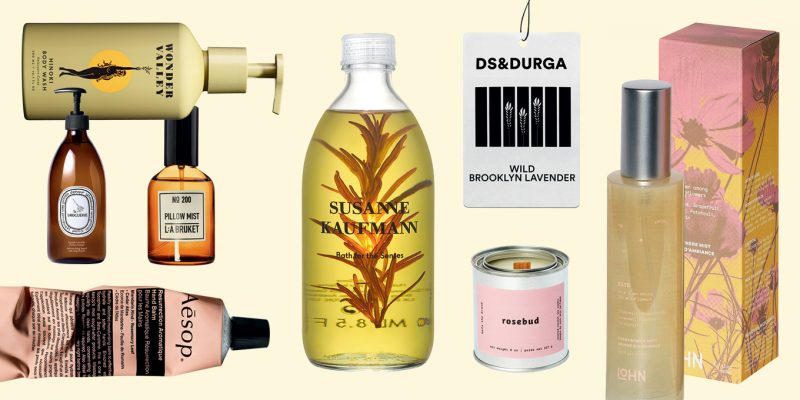
Beauty
10 Luxe Household Scents That Smell Amazing
Including Diptyque dishwashing liquid, Canadian-made room sprays and so much more.
by : Katherine Lalancette- Apr 17th, 2024

Culture
This University Elevates Women to New Professional Heights
You shouldn’t have to pause your life to move forward in your career.
by : ELLE Canada- Apr 16th, 2024

